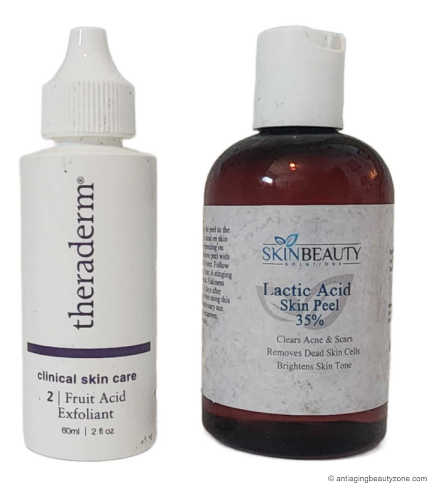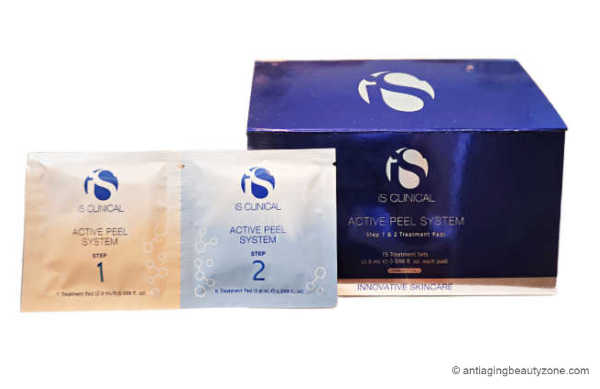As an Amazon Associate, I earn from qualifying purchases and other affiliate links. I only recommend products I’ve tried or researched.
- Home
- Skincare Guide
- Exfoliation Guide
- Glycolic & Lactic Acid
Can You Use Glycolic and Lactic Acid Together on Your Skin?
by: Linda Robison / Facial Fitness Specialist
Wondering if you can use glycolic and lactic acid together? You can—but only if you do it right.
These exfoliating acids smooth, brighten, and resurface the skin—but too much of a good thing can backfire.
In this guide, I’ll show you how I safely layer them (without redness or peeling), plus tips that help keep skin hydrated and glowing.
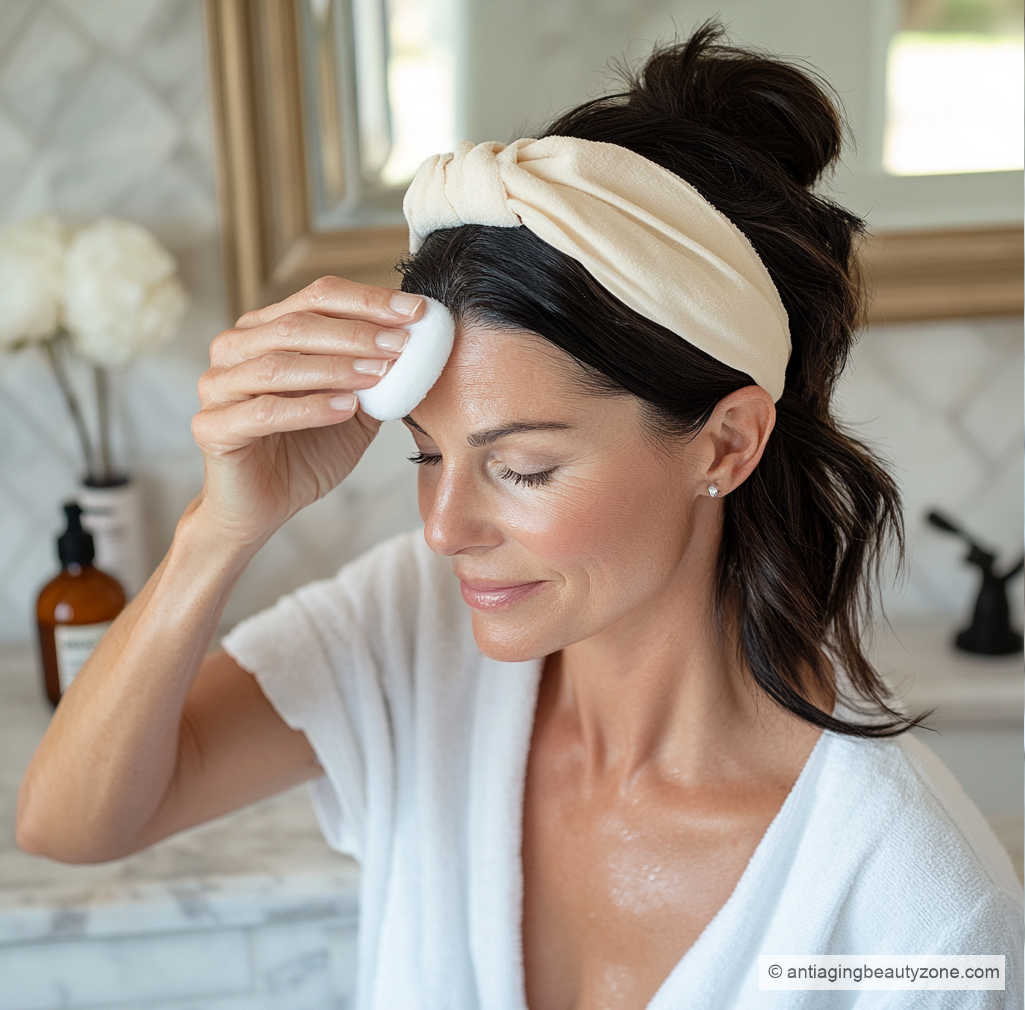
Each acid has its strengths, and when combined in a routine—if done right—they can give you that extra boost for a radiant complexion.
Best of all, they’re inexpensive!
Glycolic vs lactic acid: what’s the difference?

Both alpha hydroxy acids (AHAs) work wonders for resurfacing the skin, but they each bring something different to the table. And their effectiveness depends on concentration and skin type.
Glycolic Acid:
- Smallest AHA molecule = deeper penetration
- Brightens skin and reduces fine lines, spots, and texture
Lactic Acid:
- Larger molecule = gentler exfoliation
- Ideal for dry, sensitive, or mature skin
Can I mix glycolic and lactic acid in the same routine?
Yes! Most people can safely use glycolic and lactic acid together when they are already combined in serums, toners, or cleansers.
ABZ Tip: However, do NOT mix them yourself in peels. Only use peels that are specifically formulated to combine both acids safely.
Should I use glycolic acid or lactic acid for my skin type?

If you’re looking for deep exfoliation and faster results for wrinkles or dark spots, go with glycolic acid.
For hydration and a softer touch, lactic is your go-to. Many people alternate to get the benefits of both.
Fun fact: Most store-bought are synthetically derived, but you can find them in nature too. Both acids occur naturally in milk, fruit, and sugarcane—perfect for natural DIY scrubs like the ones on my Anti-Aging Sugar Scrub Page.
What AHA products work best: toners, serums, or peels?
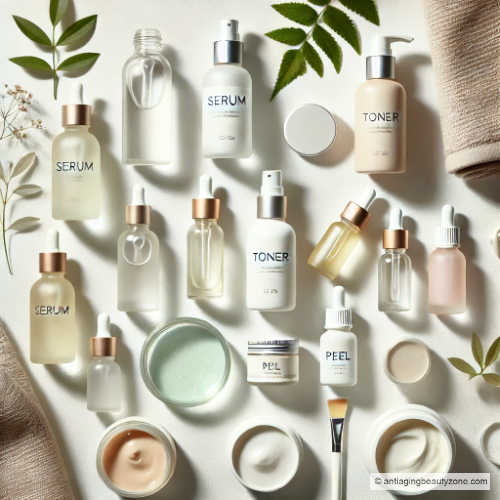
- Cleansers: Gentle enough for daily use, especially low-strength glycolic/lactic versions.
- Toners: Help prep the skin and sweep away dead cells.
- Serums: Deliver targeted results. Start with 5–10% strength.
- Peels: Deeper exfoliation for more dramatic glow. Use only weekly or monthly
How do you layer glycolic and lactic acid without irritation?
It’s hard to give one-size-fits-all advice because there are so many different types and strengths out there.
To help you understand how you might mix and match these acids, I wanted to share my personal routine.
Note: Everyone’s skin reacts differently—what works for me may not work for you.
Daily Routine: Cleanser + Toner
These are gentle enough for everyday use and help keep my skin smooth and balanced.
- Cleanser: Garnier Micellar 1% glycolic acid cleanser.
- Toner: The Ordinary Toner with 7% glycolic acid.
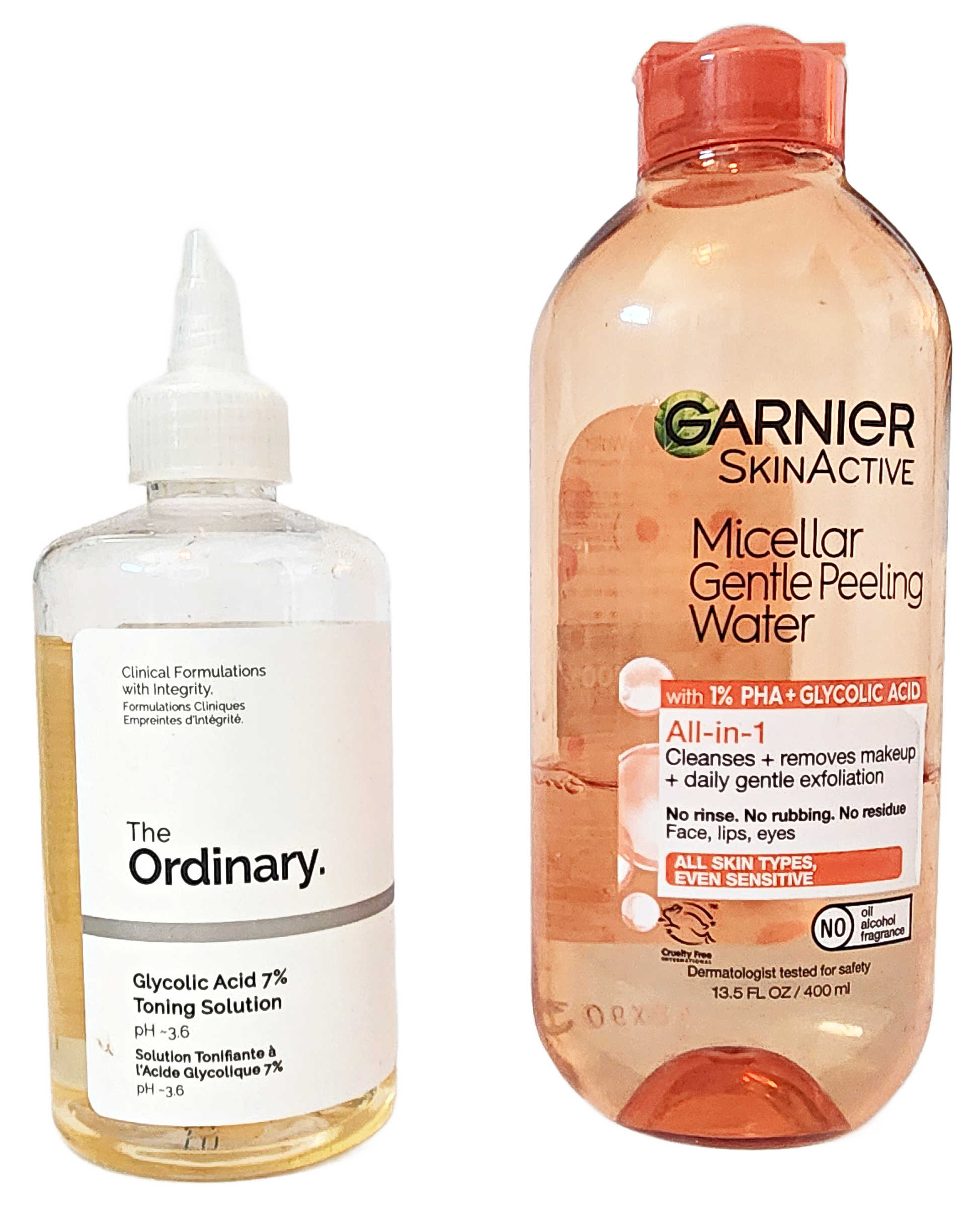 These are my products, which is why some are half-empty. 😉
These are my products, which is why some are half-empty. 😉Weekly Routine: Serum + Peel
A few times a week, I use exfoliating treatments that go a bit deeper—but still feel gentle on my skin.
- Serum: Theraderm Fruit Acid Exfoliate
(One of the few I trust for eye wrinkles and lines.) - Budget Option: The Ordinary 5% Lactic Acid
(Effective and affordable—just avoid the eye area.) - Peel: SkinBeauty Solutions Lactic Acid Skin Peel 35%
Monthly / Special Occasion Glow
This is my go-to treatments when I want that smooth, glassy finish.
-
Peel System: iSO Clinical Active Peel Treatment System
(It’s a splurge, so I save it for once a month or special events. Worth it for the glow.)
Recovery Nights: Just Moisture, No Actives
This is Important!
To avoid irritation, I alternate exfoliating days with “recovery nights”—just a rich moisturizer and a ceramide booster. No acids or strong ingredients.
What’s the best way to start using AHAs?
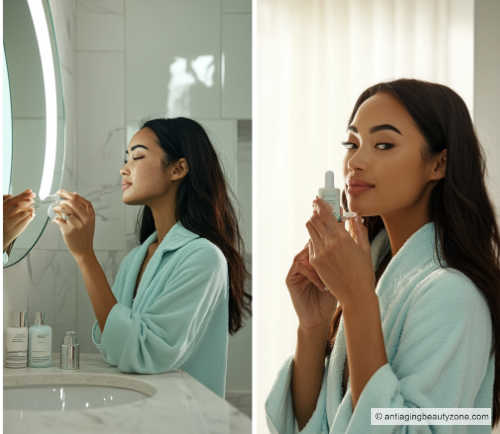
New to acids? Start simple. Use a gentle cleanser or toner first.
If that goes well after 1–2 weeks, introduce a 10% lactic or glycolic serum. Wait a few more weeks before trying a peel—and buffer it with lots of moisture.
Pro Tip: Avoid retinol, vitamin C, and other strong actives on the same day. Rotate instead.
How often should I use glycolic or lactic acid?
Here’s how often is usually safe, depending on strength:
Lactic Acid
- 5–10%: Every other day or daily
- 10–20%: 2–3x per week
- 20–30%: Weekly
Glycolic Acid
- Up to 10%: Daily or every other day
- 10–20%: 2–3x per week
- 20–30%: Weekly
⚠️ 35%+ acids should only be used by professionals.
What to apply after using glycolic or lactic acid
Do I need to moisturize?
Yes, always. These acids exfoliate but can also strip moisture. Follow with a hydrating moisturizer—ideally one with ceramides or hyaluronic acid.
Why is sunscreen important?
AHAs increase sun sensitivity. Daily SPF 30+ is a must! I prefer formulas with a PA++ rating for better UVA protection.
What are the signs of over-exfoliating with acids?
Redness, flaking, itchiness, or stinging are all warning signs. You should back off and give your skin time to heal.
How to Soothe It:
- Use a thick calming cream with ceramides and omega-3s
- Avoid all exfoliants and retinol until your skin recovers
Want pro-aging beauty tips delivered straight to your inbox? Join the ABZ Club and glow smarter—starting today
FAQs
Question: Can I use glycolic and lactic acid together?
Question: Can I use glycolic and lactic acid together?
Yes, but only if your skin tolerates it. Start slowly by alternating days or using one in the morning and the other at night.
Question: Which acid should I apply first—lactic or glycolic?
Question: Which acid should I apply first—lactic or glycolic?
Answer: Start with lactic acid if your skin is sensitive. If both are similar in texture, apply the thinner one first.
Question: Can I use AHAs with retinol or vitamin C?
Question: Can I use AHAs with retinol or vitamin C?
Answer: Alternate them. Use acids on some nights and retinol or vitamin C on others to reduce the chance of irritation.
Question: How do I know if I’m using too much?
Question: How do I know if I’m using too much?
Answer: If your skin gets red, itchy, flaky, or tight, you may be over-exfoliating. Pause acids and focus on moisture and barrier repair.
Question: How often can I use AHAs on my skin?
Question: How often can I use AHAs on my skin?
Answer: Low-strength products can be used 3–4 times a week. Stronger peels should only be used weekly or monthly.
Question: What should I avoid when using acids?
Question: What should I avoid when using acids?
Answer: Avoid using retinol, vitamin C, or other strong exfoliants on the same day to prevent irritation.
Question: What are signs I’m over-exfoliating?
Question: What are signs I’m over-exfoliating?
Answer: Redness, tightness, flakes, or stinging are signs. Stop acids temporarily and focus on hydration and barrier repair.
Question: How to get glowing skin with glycolic and lactic acid?
Question: How to get glowing skin with glycolic and lactic acid?
Answer: Glycolic and lactic acid can work beautifully together—just not all at once. Start slow, alternate when needed, and always moisturize. With the right rhythm, your skin will feel smoother, brighter, and fresher.
Final Thoughts
Layering these exfoliating acids can brighten and smooth your skin—when used correctly. Pay attention to your skin’s needs: if it looks dull or flaky, go for glycolic acid. If it’s just a little lackluster, a lactic acid refresh might be all you need.
Alternate their use, keep your skin hydrated, and never skip sunscreen. With these simple steps, you can achieve a fresh, youthful glow at any age—without spending a fortune!
Want a routine that actually works?
If you're still unsure how to layer acids without irritation, you're not alone. I share real-life skincare routines (tested on my own skin) in my newsletter—because your glow shouldn't come with guesswork.
Want simple facial fitness tips you can actually stick with?
I share quick routines, skincare tweaks, and what’s working for me — straight to your inbox.
About the Author:
Linda Robison is a Facial Fitness Specialist and the founder of Anti-Aging Beauty Zone. With decades of hands-on experience, she shares practical, natural ways to lift and brighten mature skin—without expensive or invasive treatments.
Before you go ....
Please tap on the💙in the bottom right corner if you found this page helpful.
FOLLOW ME FOR MORE TIPS:
SHARE OR SAVE FOR LATER:
